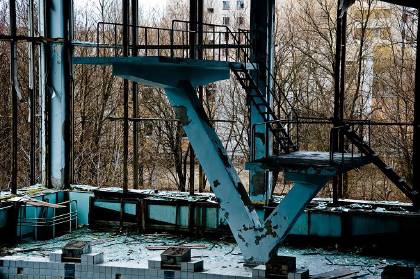Dash Dash Dash
Underway: the early stages of a seven month long programme of short plays to be written, produced and presented at the rate of one a month, culminating in an omnibus edition in the seventh month.
Dash Dash Dash will open at the Battersea Arts Centre in London on October 15th. I will write a 25 minute play, direct it, open it, watch it then write another one. I will do this six times. The plays will stand alone, they will not be episodes in a serial but when joined together they will be greater than the sum of their parts. (Their parts will be okay too.)

In an earlier post, ‘I, Healer‘, I suggested that theatre performance composed in an incoherent language might be suitable for the depiction of an incoherent world. When narrative in the real world comes to be viewed with the suspicion that it’s a cover-up of some sort, the alternatives are stark: nostalgic reversal or the homeopathic dose. While the strategy of the dilute dose is risible in its ‘medical’ context, there is something to be said for its application to the business of artistic representation. Just what might it constitute? A paradox begins to arise wherein we find ourselves effortlessly edging towards naturalism and mimesis again: the depiction of disorder by a vocabulary of disorder.
If all is disordered then the disordered depiction of it amounts to naturalism. Or it does if all that is to be presented is the appearance of disorder. If a vocabulary of disorder is employed then it will, by definition, be framed within an aesthetic of disorder – this is the language of the action movie or a play about war or tempestuous marriage. It will be perfectly recognisable. On the other hand, if a disordered vocabulary is used then there might be a chance.
The problem is that it’s seething, pervasive disorder that requires attention rather than the intermittent disruption of otherwise serviceable narratives. The current panoramic disorder is not there to be faithfully reproduced. It compels a reassessment of the means whereby it is to be represented. The imposition, for example, of narrative onto such fracture and confusion seems at best rather sweet and at worst forlornly misjudged.

Audiences are not gagging for these hot new fragments and fractures of which we speak. The unassailable popularity of bonneted drama and humiliating competitions on the television suggests, in both cases, that a subterranean current of hysteria is a must-have component of contemporary cultural consumption. Were the conventions of the bonnet and the rules of the competitions dissolved then the hystericised mechanisms beneath would be revealed and, presumably, found irresistible. In my dreams.
The avant-gardes have been here before, of course. In 1961, Martin Esslin in his book ‘The Theatre of the Absurd’ wrote about a new sort of theatre that he had identified: ‘If a good play must have a cleverly constructed story, these have no story or plot to speak of; if a good play is judged by subtlety of characterisation and motivation, these are often without recognisable characters and present the audience with almost mechanical puppets; if a good play has to have a fully explained theme, which is neatly exposed and finally solved, these often have neither a beginning or an end; if a good play is to hold the mirror up to nature and portray the manner and mannerisms of the age in finely observed sketches, these seem often to be reflections of dreams and nightmares; if a good play relies on witty repartee and pointed dialogue, these often consist of incoherent babblings.’
Esslin indicts the usual suspects in his analysis: the decline of religion, the collapse of faith in ‘progress, nationalism, and various totalitarian fallacies’ in the aftermath of the Second World War. He quotes Camus: ‘A world that can be explained by reasoning, however faulty, is a familiar world. But in a universe that is suddenly deprived of illusions and of light, man feels a stranger. His is an irremediable exile, because he is deprived of memories of a lost homeland as much as he lacks the hope of a promised land to come. This divorce between man and his life, the actor and his setting, truly constitutes the feeling of Absurdity.’
Almost forty years later, in 1999, Hans-Thies Lehmann published ‘Postdramatic Theatre’, seen in some circles as framing the theatrical products of our new century as convincingly as Esslin had for postwar drama up to the 60s. Among the many characteristics of the new theatre that Lehmann examines is a decentring of the text, wherein it is no longer the sole determinant of the expressive elements around it. He also comments on the intermittent, deliberate suspension of the closed fictive world of the performance that allows some element of ‘the real’ to break into the experience.
In the Dash Dash Dash shows I shall attempt to carry on the good work by insisting that six short shows, unrelated in terms of narrative, setting, milieu, pace, tone or style can somehow constitute the parts of a whole. We’ll see.

03.09.2009
